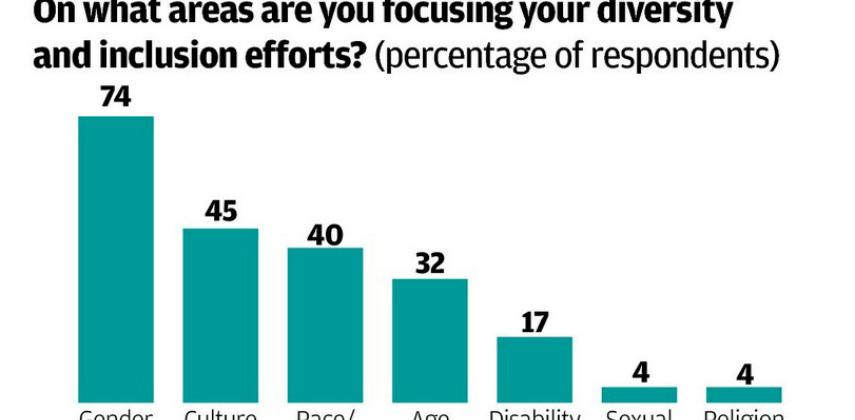It's goodbye homogeneity, hello diversity, as organisations in Asia-Pacific wake up to the realities of globalisation. A recent study of the diversity and inclusion (D&I) strategies of 31 companies across the region, by global human resources consultancy Mercer, showed that most participating organisations had a D&I strategy in place, while those that did not are making plans to step into the loop.
Topping corporate D&I agendas was gender, followed by multinational and ethnic mix. When asked to name their top three D&I strategies from a choice of seven different subjects, 74 per cent of respondent organisations cited gender as the main focus.
Attracting diverse talent was next in line, with 45 per cent citing national culture and 40 per cent citing race/ethnicity mix, with "race" defined as nationality and "ethnicity" as different groups within a single national culture.
Driving the initiatives were multi-generational workforces (43 per cent), increased expectations for flexible options (37 per cent), the ageing population (34 per cent) and gender (34 per cent).
"Although multiple nationalities and generations are newer workplace trends than gender, gender is possibly the most recognisable feature and has long been a pressing issue," says Bianca Stringuini, Mercer's human capital consultant. Globalisation and increasing talent mobility across Asia are also prompting organisations to hire international talent, she says.
"Asian multinationals are expanding and companies which would have in the past preferred a homogeneous culture now realise the importance of global experience. They are therefore hiring international talent and giving Asian staff more international experience. We are also seeing Western multinationals increasingly pursue Asian talent and adopting local leadership styles," she says.
Gender initiatives took the form of flexible work arrangements, mentoring and family-friendly policies. Grooming of women for leadership is a strong area of focus this year, Stringuini says.
D&I in Asia is a pale version of its Western equivalent, which has been practised for decades and now embraces gender, race, ethnicity, generation, disability, sexual orientation and religion. In contrast, in nations such as Japan and India, a diversity policy merely translates into a gender policy.


